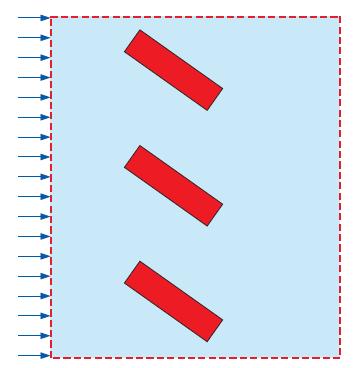Repeat the calculations of Prob. 1550 for several angles of attack of the heating elements, from 0
Question:
Repeat the calculations of Prob. 15–50 for several angles of attack of the heating elements, from 0 (horizontal) to 90° (vertical). Use identical inlet conditions and wall conditions for each case. Which angle of attack provides the most heat transfer to the air? Specifically, which angle of attack yields the highest average outlet temperature?
Data from Problem 15-50
Generate a computational domain and grid, and calculate flow through the single-stage heat exchanger of Prob. 15–22, with the heating elements set at a 45° angle of attack with respect to horizontal. Set the inlet air temperature to 20°C, and the wall temperature of the heating elements to 120°C. Calculate the average air temperature at the outlet.
Data from Problem 15-22
A new heat exchanger is being designed with the goal of mixing the fluid downstream of each stage as thoroughly as possible. Anita comes up with a design whose cross section for one stage is sketched in Fig. P15–22. The geometry extends periodically up and down beyond the region shown here. She uses several dozen rectangular tubes inclined at a high angle of attack to ensure that the flow separates and mixes in the wakes. The performance of this geometry is to be tested using two-dimensional time-averaged CFD simulations with a turbulence model, and the results will be compared to those of competing geometries. Sketch the simplest possible computational domain that can be used to simulate this flow. Label and indicate all boundary conditions on your diagram. Discuss.
FIGURE P15–22

Step by Step Answer:

Fluid Mechanics Fundamentals And Applications
ISBN: 9780073380322
3rd Edition
Authors: Yunus Cengel, John Cimbala




